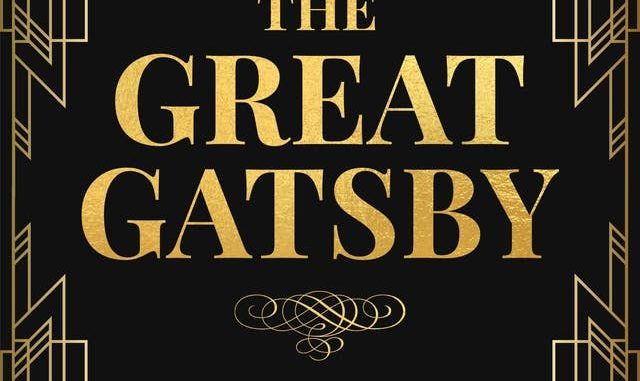
The one style of American music that doesn’t really fit into the accepted definition of “Americana” is Jazz. While “our” sort of music draws influence from most styles born or evolved in the USA it’s the least obviously represented in the music we feature at AUK. In words, on the other hand, Jazz has become an integral part of shaping American literary expression, and as the music evolved so did the writing.
Scott Fitzgerald’s ‘1925 novel ‘The Great Gatsby’ serves as a prime example of this. Nick Carraway, the narrator, finds himself drawn to Gatsby’s extravagant parties, where the frenetic energy of early jazz is matched by the energy of the party itself. The music, new and slightly risky at the time, reflects the era’s excitement and decadence, for those who were white and privileged at least. Fitzgerald is generally credited (inaccurately) with inventing the term “The Jazz Age” for the 1920s through works like ‘Tales of the Jazz Age’, a collection of short works published in 1922 and ‘Echoes of the Jazz Age’, a 1931 essay that he saw as ruling off the Jazz Age.
In the 1930s the music was becoming more sophisticated, with artists like Duke Ellington and Louis Armstrong, and writing was following it. This was the Harlem Renaissance. Langston Hughes, one of its central figures wrote about this time when “the Negro was in vogue”, which was later reworked as “when Harlem was in vogue.” The first real flowering of black artistic expression, alongside jazz of the 20th century, “Jazz poetry” like Langston Hughes ‘The Weary Blues’ used the language of the blues and the syncopated rhythms and improvisational style of jazz music to produce work that spoke to the black experience of America in the first half of the century.
In the 40s and 50s moved jazz from the dance floor to the concert hall and the club and the writing influenced by it followed. Jack Kerouac’s ‘On the Road,’ transcends the image of a mere road trip fuelled by jazz and wanderlust. The improvisational style of his writing directly reflects the spontaneous, free-flowing nature of the new developments in Be-Bop, modal and free jazz. Just as a jazz solo thrives on exploration, Kerouac emphasises the journey as much as the destination. Kerouac was part of the Beat Generation, which used the energy of jazz to push their explorations of identity and social critique. Amiri Baraka (LeRoi Jones earlier in his life) acknowledged the influence of jazz and its musicians on their work, specifically Miles Davis. “I wanted to look like that too — that green shirt and rolled up sleeves on ‘Milestones’…always wanted to look like that. And be able to play ‘On Green Dolphin Street’ or ‘Autumn Leaves’ … That gorgeous chilling sweet sound. That’s the music you wanted playing when you was coming into a joint, or just looking up at the sky with your baby by your side, that mixture of America and them changes, them blue African magic chants.”
Ken Kesey’s ‘Sometimes a Great Notion’ was featured by Gordon Sharpe here a few years ago. Kesey saw himself as a link between the Beat Generation of the 1950s and the hippies of the 1960s, and his involvement with the Grateful Dead, the most “jazz” of Americana related bands, kept the improvisational quality they shared with jazz flowing though his work.
More recently Toni Morrison, in ‘Beloved,’ wove the improvisational spirit of jazz into her “haunting exploration of slavery’s lingering effects.” John Updike, in Rabbit is Rich, uses the music’s stylistic evolution to mirror the protagonist’s struggles with aging and societal shifts. Many American authors have incorporated jazz into their work, employing it to explore themes of race, identity, and to create a uniquely American literary style. We can only scratch the surface of the influence of jazz on American writing here, but you can find the sound and style of jazz throughout the books of the 20th and 21st century.
As I suggested above the closest link between jazz and Americana comes from the Grateful Dead. They improvise in a way few other “rock” bands can or do. And when they have a guest from the world of jazz, they, in the words of Branford Marsalis “have big ears and real chops, they listen and respond” to what I’m playing. For proof of that here’ is the version of ‘Eyes Of The World’ from the ‘Without a Net’ album that shows them doing just that, drawing some excellent work from Marsalis, Brent Mydland, and Jerry Garcia.



Interesting read Tim. Got me thinking. Ray Celestin did an enjoyable quartet of crime novels based in different cities and at different times. The stories accompanied by references to jazz and swing as well as the blues. New Orleans 1919, Chicago 1928, New York 1947 and Los Angeles 1967. First book is called Axeman’s Jazz.
Michael Farris Smith wrote Nick. The story of Carraway’s life before moving to West Egg and into Gatsby’s world.
Thanks Andy, there’s something about the “American way” of writing that seems to resonate with the way a lot of Jazz is structured.
I came here to say exactly this. The other books are “Dead Man’s Blues”, “The Mobster’s Lament” & “Sunset Swing”. All feature Louis Armstrong as a character.